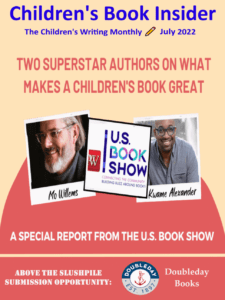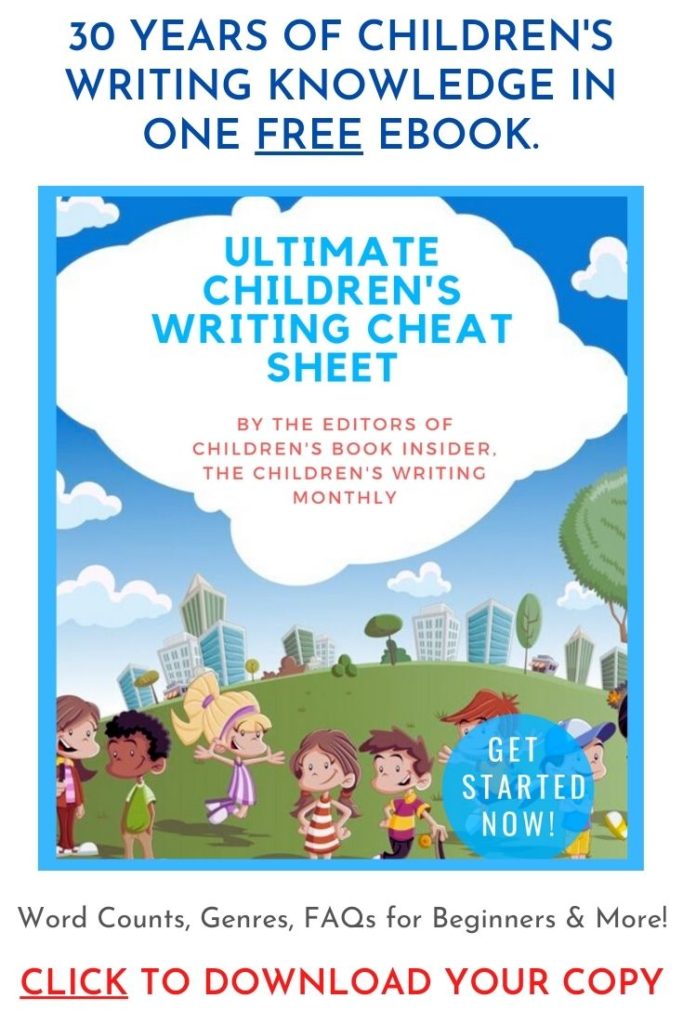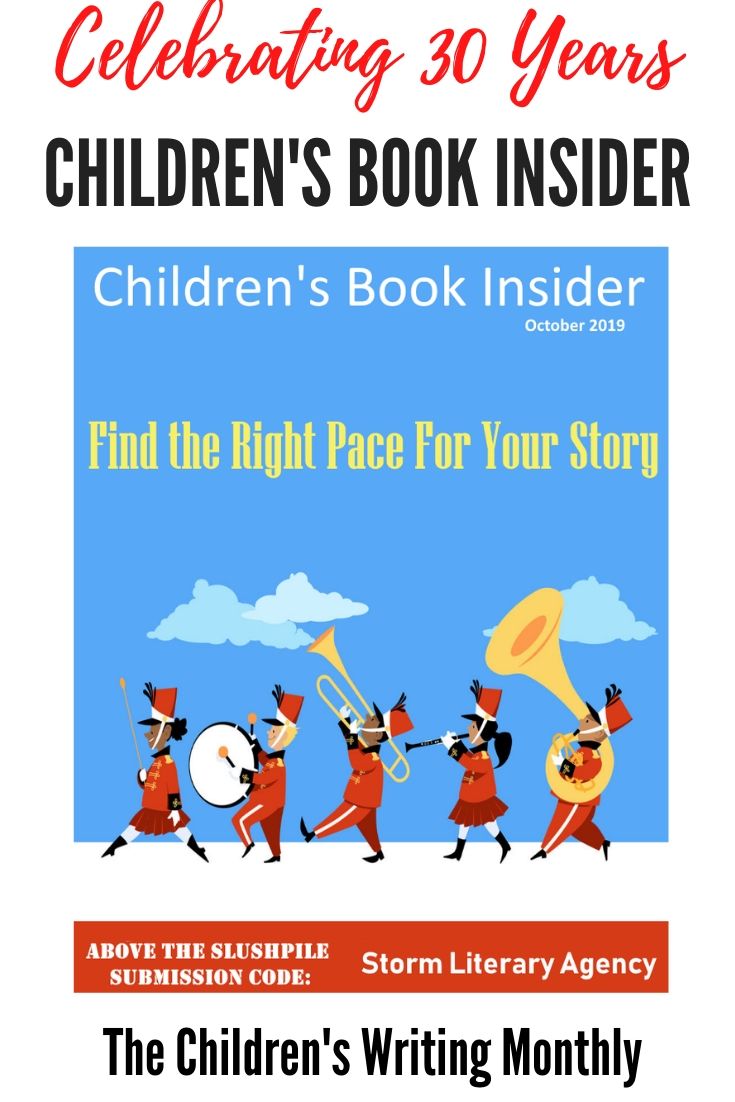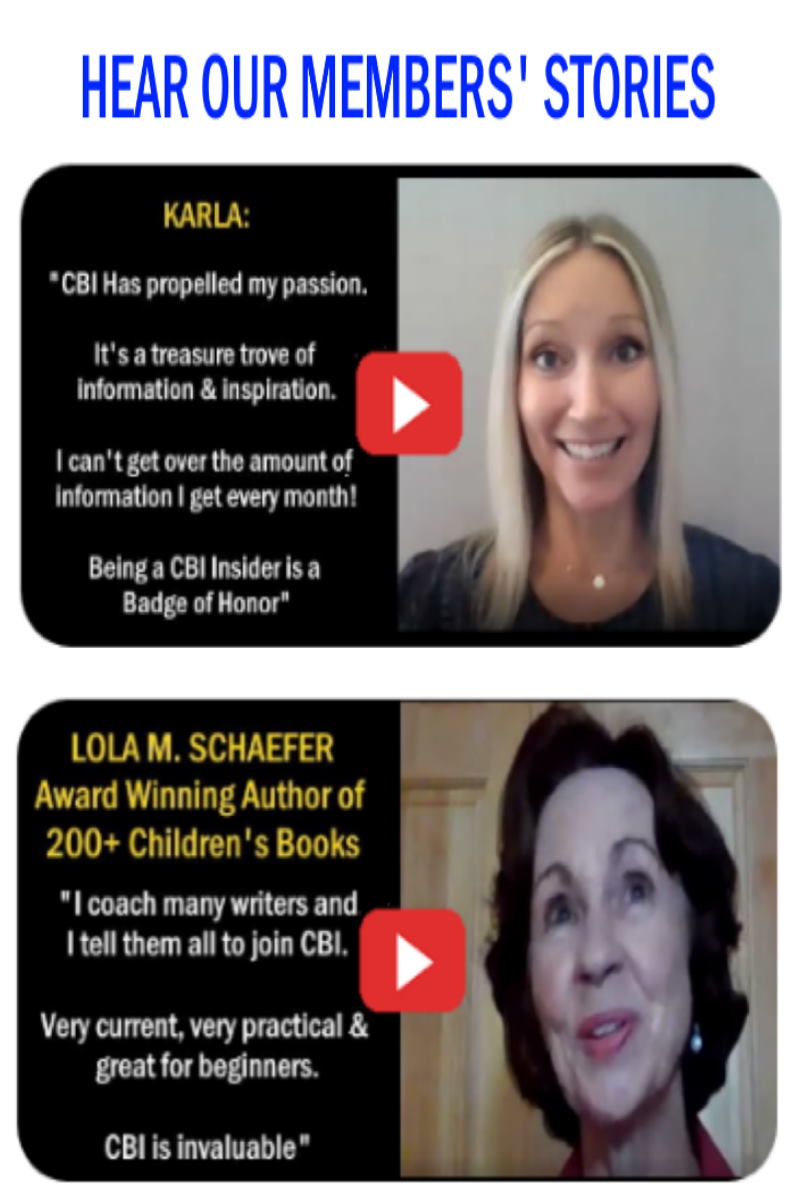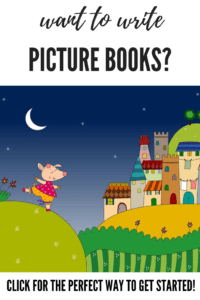
(Excerpted from the July issue of Children’s Book Insider, the Children’s Writing Monthly)
Interview by Lynne Marie
This month, it’s my pleasure to chat with Frances Gilbert. In addition to being the editor-in-chief of Doubleday Books for Young Readers, an imprint of Random House Children’s Books, Frances has authored picture books for Simon & Schuster and Random House, several Step Into Reading leveled readers, and a Little Golden Book.
LYNNE MARIE: Which came first for you, being an editor or a writer? How did that inform your success in the other career?
FRANCES GILBERT: I had been a children’s book editor for almost twenty-five years before it occurred to me to write a children’s book of my own. I wrote my first picture book, Go, Girls, Go!, as more of a writing exercise, with no intention of having it published. But I kept coming back to it and decided in the end to share it with some editors. I sort of stumbled into being a writer, but with a quarter century of experience behind me saying “Try it!” I’m glad I did.
Being a published author has given me a lot of insight into how hard an author must work to promote their books. Being active on social media, booking author events, talking to booksellers, writing to influencers – it all takes a lot of time but is very necessary. I’m in awe of the writers I work with such as Tammi Sauer who make it look so effortless.
LM: Please share your process for selecting which ideas to pursue in your writing. When do you think like an author and when do you think like an editor?
FG: I always think like an editor. An editor always considers who the reader is and who the customer is. Alas, it’s not enough for it just to be a nice story; as an editor who’s managing a business I have to think about who will buy it. So, when I wrote Go, Girls, Go!, I knew 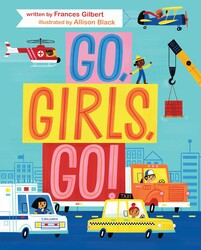 books about vehicles have always been popular, but I wanted to write a story that gives that theme a different spin. By putting girls in the driver’s seat, I knew there’d be many parents who would appreciate this differently gendered viewpoint for their children.
books about vehicles have always been popular, but I wanted to write a story that gives that theme a different spin. By putting girls in the driver’s seat, I knew there’d be many parents who would appreciate this differently gendered viewpoint for their children.
LM: How might our readers develop a similar process to inform their choices? What are some important things to consider when selecting which bright and shiny idea to pursue?
FG: It’s blunt, but the question I always ask about my own writing and other people’s writing is simply, “Who cares?” Is what you’re writing interesting enough, fresh enough, new enough, compelling enough to inspire a publisher to spend many thousands of dollars on acquiring, developing, promoting, and selling your book? Is it enticing enough for a hardworking customer to part with their money and bring it home? Is it important enough for a cash-strapped library system to devote some of their resources to add it to their collection? Is a bookseller going to give some of their very limited shelf space to your idea? It has to meet all these criteria if it’s going to be published.
LM: I absolutely chuckled through your newest picture book, Too Much Slime! Please share the story behind this idea.
FG: I’m glad it made you laugh! The idea came from being at a cottage with my cousin and her young daughter, who’d spent much of the summer making lots of slime. They were about to head home and were arguing about how many tubs she could bring with her. At some point my cousin declared that there was “too much slime!” and instantly knew I wanted to write about that. So I turned slime into the main character, and decided it would be fun to explore what would happen if slime took over a home, and then a street, a school, and a town. And I gave it kind of a Cat In the Hat treatment by getting rid of the parents and letting kids explore the fantasy of having this kind of adventure without parental input.
LM: Speaking to hooks, please share what you have determined to be the reading/marketing hooks for Too Much Slime!
FG: The marketing hook is that lots of kids make slime, and lots of parents complain about it, so my story is a bit of a nod to both the reader and the grown-ups. When I was four, I remember reading Bread and Jam for Frances with my mom. It’s about a character who’s a very picky eater, and my mom and I both found it funny because I was a famously picky eater and of course my mom knew it, so we bonded with a knowing laugh about that. I remember her saying, “You know this is you, right?” and me saying “Yes!” That lesson has stuck with me—to connect with both kids and adults and to give them that common ground to share. With Too Much Slime!, kids and grown-ups can both enjoy laughing about what would happen if the slime in their house suddenly grew and overwhelmed everything. It’s like a very silly and low-stakes horror story. I also peppered the story with tons of made-up sound words from the slime, such as “flerk”, which adds sheer goofiness to a read-aloud.
LM: Please share a tip to help our readers be best in touch with the age group they are writing about.
FG: It’s important to read current books in the market to understand what kinds of stories today’s kids are enjoying and grown-ups are buying. What books are indies putting in their windows? What books does B&N have on display? Which books are featured at Target? And if you have your own kids, of course, study what they choose themselves, or what they ask to have read over and over again.
LM: Apart from an engaging premise, Too Much Slime! has age-appropriate and accessible humor. How important is humor in writing for the picture book set?
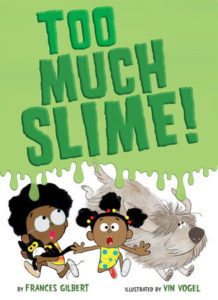 FG: Humor is important if your book is supposed to be funny! I tried to pack a lot of wry and also silly humor into that book, but not every book has to be funny. Go, Girls, Go! went for more of a motivational angle; Too Much Slime! is definitely funny; and I’ve just had a new picture book announced with Beach Lane/Simon & Schuster coming next year called Can You Hug a Forest?, which is gentle and mindful.
FG: Humor is important if your book is supposed to be funny! I tried to pack a lot of wry and also silly humor into that book, but not every book has to be funny. Go, Girls, Go! went for more of a motivational angle; Too Much Slime! is definitely funny; and I’ve just had a new picture book announced with Beach Lane/Simon & Schuster coming next year called Can You Hug a Forest?, which is gentle and mindful.
LM: What advice do you have for those who wish to write humorous picture books?
FG: I’m always surprised at how many submissions I get where the query letter tells me it’s a humorous picture book but the text doesn’t make me laugh. I wouldn’t recommend writing funny picture books if you’re not naturally funny. But for writers who are funny, I’d advise really pushing the humor to get the biggest belly laughs possible. Don’t phone anything in or get lazy. Work on your humorous writing the way a comic hones her or his standup material over months on the road. When I work with funny writers such as Dev Petty, Mike Boldt, Tammi Sauer, and Alex Willan, they’re always pushing themselves to make each story, each line, each word funnier and funnier. The trick of course is to make it look effortless.
LM: Can you recommend some good humor mentor texts?
FG: I’m a bit nervous about the idea of mentor texts because I want writers to be original, and I worry that someone might think that if they write in the pattern or style of a popular writer they’ll get published. I wouldn’t want to encourage people to think there’s any kind of magic formula they can follow. But in terms of books that make me laugh really, really hard, and which have strong authorial voices, memorable characters, perfect comic timing, and bonkers-yet-believable story lines, some of my favorites that I’ve published are: Chicken Dance by Tammi Sauer and Dan Santat; No Bunnies Here! by Tammi Sauer and Ross Burach; I Don’t Want to Be a Frog (and the three sequels) by Dev Petty and Mike Boldt; Don’t Eat Bees! by Dev Petty and Mike Boldt; Bad Dog by Mike Boldt; and the two Jasper & Ollie books by Alex Willan.
LM: Please share your thoughts on how to achieve successful comedic timing.
FG: Think of a picture book as a physical object. A joke can sometimes land better if you time it so that it comes after a page-turn, as it can give your story a beat or pause to really set up the joke and can allow the illustrator to create something surprising and/or hilarious for the page after the page-turn. I wouldn’t recommend overdoing that trick; you can’t have a whole book full of wry page-turns, but if you use it selectively it can amplify the humor.
A lot of the humor is also in the tension between words and art. This is why we always stress that you should “let the illustrator speak”. It’s like in the TV show Arrested Development where something happening in the scene is directly contradicted by what the voice-over is saying. That ironic contrast can be brilliantly funny. But, again, add it to your toolbox but don’t overdo it. An entire picture book of ironic distance between the text and illustrations can feel pat and overdone.
LM: What do you look for in a good fiction pitch? Nonfiction pitch? Illustrator postcard?
FG: I wish I had a more specific and helpful answer for this but I never do. Mostly I’m looking for a fresh idea that turns my head. And ideally something with a strong hook that will allow me to instantly know how I can present this to my colleagues in sales, marketing, and publicity and how they can sell this to their booksellers and libraries.
One thing I don’t need to hear about in your pitch is how many words it is. That’s not at all interesting information to include when you’re trying to grab an editor’s attention. No editor has ever read a pitch and said, “Oooo, 256 words! Sign it up!” So that’s one thing writers can cross off their list of things to stress about!
LM: Name some books that are good examples of what you are looking for in a project to take on?
FG: In terms of recent books I’ve published, there’s A Grandma’s Magic by Charlotte Offsay and ?sa Gilland, which is a tribute to grandmas and their everyday magic. I loved the fresh spin Charlotte took with her story, pointing out that daily family activities such as gardening, playing, baking, sewing, and exploring are all magic in their own way.
I also recently published one of the most unique, beautiful, and brilliant books of my career: I’d Like to Be the Window for a Wise Old Dog by 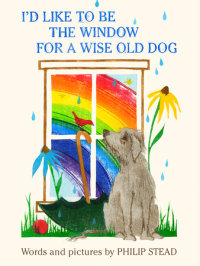 the wonderful Philip Stead. I’d urge everyone to read it. It’s a gentle but unusual and open-ended story about imagination and possibility. It feels like an instant classic—something that could have been published fifty years ago or today and would be equally relevant and needed. And there’s no “hook”; just extraordinary language and heartbreakingly gorgeous illustrations. It will certainly provide thoughtful inspiration to push your words to new heights.
the wonderful Philip Stead. I’d urge everyone to read it. It’s a gentle but unusual and open-ended story about imagination and possibility. It feels like an instant classic—something that could have been published fifty years ago or today and would be equally relevant and needed. And there’s no “hook”; just extraordinary language and heartbreakingly gorgeous illustrations. It will certainly provide thoughtful inspiration to push your words to new heights.
LM: Share your excitement about one of your latest acquisitions and what the story is about.
FG: I recently acquired something incredibly special, which comes out next summer: Under the Blanket Sky, written and illustrated by Tim Fischer. It’s his debut and yet it shows the accomplishment of someone who’s been writing and illustrating for children for decades. It’s the story of a young boy who meets an unlikely friend—a huge, fuzzy owl—and how they grow closer over one long yet fleeting summer. When the owl must fly away as the weather gets colder, the boy grieves this loss, and yet comes to understand that sometimes there are beings who pass through our lives and change us forever, and their love and memory sustain us. I’ve honestly never read or seen anything like it and I think it’s going to make huge waves next year. I can’t remotely describe how perfect it is.
NOTE TO READER: Frances Gilbert only accepts submissions through agents, except during our special Above the Slushpile opportunity for CBI subscribers that ran from July 1-31, 2022. Since the following remains good advice even if you aren’t submitting to Doubleday, we have kept it from the original article.
LM: Please share anything you may have on your wish list or do not want to see from our readers, as far as genre, topic, theme, etc.
FG: I don’t have a wish list but I will say I’m not at all interested in stories that rely on formulas or prescribed rules, which tend to make a lot of stories sound similar to each other. I’d encourage writers to stop thinking about limitations that they’ve heard about and focus on the fun part instead: the creativity. I reject many manuscripts each week because they sound the same, so I’d love to stress that following the rules not only won’t get you closer to being published, it likely will become a hindrance. Free yourselves!
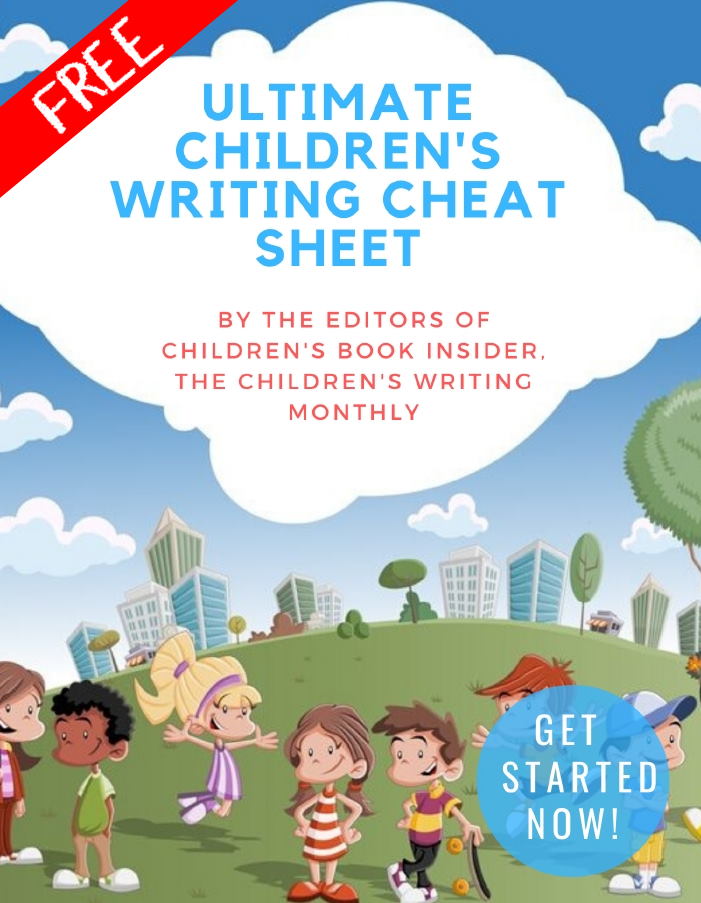
✏ Word Counts & Age Groups for Every Kidlit Category
✏ FAQs, Glossaries and Reading Lists
✏ Category-specific Tips, from Picture Books Through Young Adult Novels
✏ 5 Easy Ways to Improve Your Manuscript
✏ Writing For Magazines …and more!
This is a gift from the editors of Children’s Book Insider, and there’s no cost or obligation of any kind.
We will never spam you or share your personal information with anyone. Promise!
